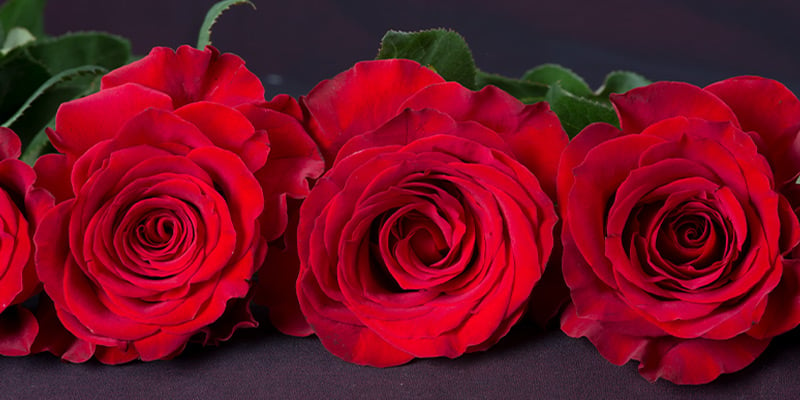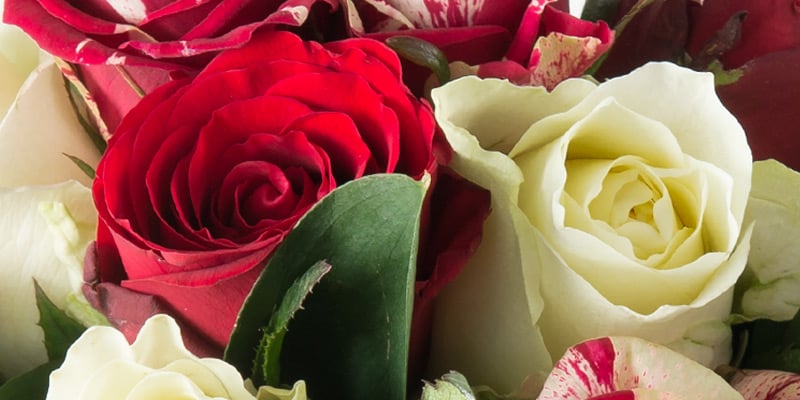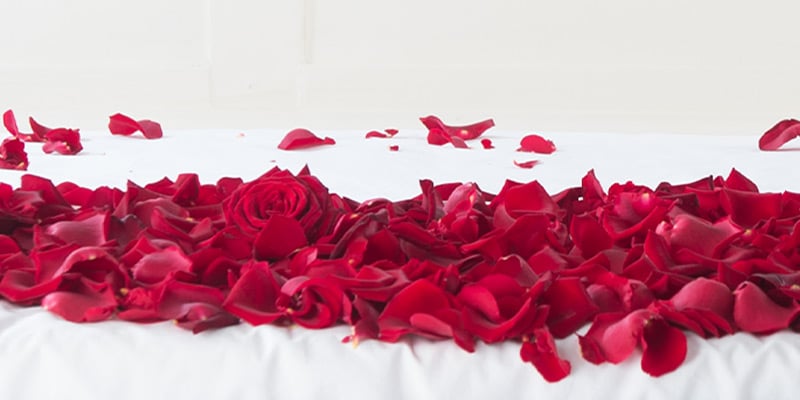How The Red Rose Became The Ultimate Symbol Of Love
- Get link
- X
- Other Apps
There are some 400,000 species of flowers in the world, many of them just as beautiful as the rose, but none is such a timeless symbol of romance. Ever wondered why? We took a brief stroll through the history books to find out.
Magical Rose Myths
Fossil evidence suggests that the rose is about 35 million years old, so it’s little wonder that it crops up in many ancient stories!
Have you ever realised that ‘rose’ is an anagram of Eros, the Greek god of love? Greek mythology tells it that Chloris, the goddess of flowers, was walking in the woods one day when she came across a lifeless nymph. Saddened by its untimely demise, she transformed it into a flower so beautiful that it would be judged The Queen of Flowers by all of Mount Olympus. Aphrodite, the goddess of love and mother of Eros, named it ‘rose’ in honour of her son.
The rose’s association with devotion can be traced back to another Greek myth. Legend has it that when Aphrodite discovered a murder plot against her mortal lover, Adonis, she dashed through a rose bush to warn him and cut her ankles on its thorns. Her blood turned the white petals red. Upon discovering that she was too late and he had been gored by a wild boar, she wept as he died in her arms. Her tears mingled with his blood and burst into anemones.

Roses and the Romans
Roses were popular throughout the Roman period, where they were used for medicinal purposes, perfumes and as confetti. Newly married couples would wear rose crowns and their beds would be covered in rose petals, linking roses to love and sexual desire. The phrase ‘sub rosa’ or ‘under the rose’, meaning ‘confidentially’, also hails from this bygone age. Roman ceilings were often adorned, painted or engraved with roses to encourage guests to keep whatever was uttered beneath them private.
Knights and English roses
Fast forward to the 15th century, when the House of Lancaster and the House of York crusaded to rule England in a series of bloody battles that later became known as the War of the Roses.
The House of Lancaster’s heraldic badge was a red rose and the House of York’s, a white one. In 1485, the Battle of Bosworth saw Henry Tudor, a Lancastrian, defeat King Richard III and become King Henry VII. His marriage to Elizabeth of York unified the rival factions and the red and white Tudor rose was born.
The rose has been the national flower of England ever since this bloody time, with the term ‘English rose’ commonly used to describe a naturally pretty brunette with porcelain-like fair skin, flushed cheeks and pink lips.

Shakespeare’s favourite flower
The word ‘rose’ appears more than 70 times in Shakespeare’s 16th century plays and sonnets, and it is the flower that he mentions the most.
In the opening lines of Venus and Adonis, the bard describes his male hero as “rose-cheeked”, referencing the aforementioned Greek myth. More famously, in Romeo and Juliet, Juliet of the House of Capulet argues her case for loving Romeo, of the rival House of Montague, with the line, “What’s in a name? That which we call a rose, by any other name would smell as sweet”.
Learning the language of flowers
During the Victorian era of the 19th century, lovers would use floriography, or ‘the language of flowers’, to send covert messages to each other via posies known as tussie-mussies or nosegays. In this unique floral dictionary, the red rose symbolises love, passion, romance and devotion. It was used to simply and proudly say, “I love you”, at a time when the verbal expression of such sentiments was deemed socially inappropriate.
Other colours of roses have their own similar, yet subtly different, meanings. Pink roses represent affection and admiration, making them a good choice for budding relationships, while white roses symbolise purity and are still popular at weddings and funerals today. Yellow roses reflect friendship. Whatever you do, steer clear of black (actually very dark red) roses, as they have a long association with death!
Roses as film stars
Roses are frequently used in movies as emblems for love, sexuality and desire. Oscar-winning Nineties movie American Beauty sees Angela, the unattainable object of Lester’s lust, appear in his dreams, lying naked on a bed of rose petals.

Then, of course, there’s Disney’s Beauty and the Beast, with its iconic magical rose. The prince, turned into a beast by a witch as punishment for his arrogant behaviour, must find true love before the rose’s last petal falls, else he will remain a beast forever.
Our favourite is 2015’s The Little Prince, based on the 1943 novel by Antoine de Saint-Exupéry about a young prince who falls in love with a rose which symbolises the author’s wife. Though flawed in many ways, the prince comes to realise that, although there are many other roses, his is the most special of all because he has loved and cared for it. If that’s not romantic, we don’t know what is!
- Get link
- X
- Other Apps

Comments
Post a Comment
Thank you for reaching us